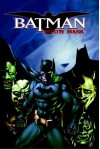La Edad de Oro by Jose Marti

(The edition BookLikes is picking out is not the edition I am describing, but since I can't find it, this is as close as you get. The note below is from when I read it. BookLikes needs to do some serious work on bibliographic control and allowing some users to modify book records).
I had to read this when I was in school, probably around 7th or 8th grade. Jose Marti, the Cuban poet and independence fighter, was exiled for a time in New York City. During that time, one of his projects was this: La Edad de Oro, a magazine for children. Now, keep in mind this was the late 19th century or so, thus we are not talking the crappy pap kids get fed today. Marti treated children like human beings who were smart and capable of learning and growing up to be productive citizens and members of society. His magazine reflected that. This volume collects the four issues of the magazine he published. Each issue contains some essays on a broad range of topics from Latin American heroes to the World's Fair in Paris. He also wrote poetry, and the magazine included some kind of fiction such as a fairy tale or fable. He wrote and adapted content reflective of a wide worldview, and he did it all in a language that young people could easily understand. And, as if that is not enough, the guy was a pretty good writer; there is a certain lyricism to the text. For me, this was one of the first books I read that explored a variety of topics. I still remember the fable of the magical shrimp and reading about the great men--Bolivar, San Martin, and Hidalgo. It is a book that you can read a piece now and a piece later. I had not revisited it in years, so I felt I should reread it. It is still a pretty good read, very literary, which is amazing considering he was writing this particular work for children. In other words, he had high expectations of his young readers, expectations that are rarely found in children and YA writers today (yes, there are some good children and YA authors that treat their audience seriously, with respect, dignity, and as good readers, but this seems rare). This particular edition includes illustration plates by Lorenzo Amengual, which add to the classic look of the book.Overall, if all you have read of Marti is his poetry, which is excellent, this volume will give you a different look at this brilliant writer. It will show him as a humane man who also cared for and believed in children. Finally, I believe there is a recent translation in English, which may be worth looking into if you don't read Spanish. However, if you read Spanish, you should read it in the original.












